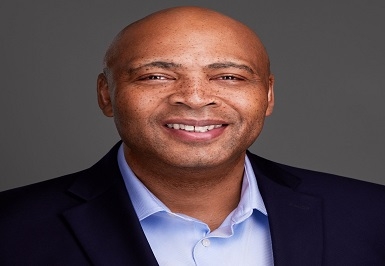Will Alexa 4-0 Be Your Leadership Coach Of The Future

What if you had a resource—a personal advisor shared with no one else—that could help you be a better leader? An advisor with great listening skills, who knows you extremely well and is available 24/7? Someone that can be completely trusted with no hidden agendas, that literally remembers every word you’ve ever said and how you said it?
Oh, and one other thing—this resource also learns to be a better advisor to you every day.
If offered such a resource, I think most leaders would shout, “Yes, yes!” But here’s the catch: that resource would be a machine. A device. A collection of bits and bytes. A bot.
Today’s artificial intelligence (AI) based bots like Siri, Alexa or Google Assistant are good at providing information, playing music, online buying and many other transactional tasks. Chat-bots on e-commerce sites can be helpful with providing rudimentary information.
But none of these present state devices and technologies are remotely sophisticated enough to serve as a leader’s personal coach and confidant for successfully addressing work situations like conflict with peers, coaching others, managing staff performance issues, etc…
But perhaps in the next 10-15 years, a future version of these personal assistants—let’s call it “Pat”—may be ready and able to help you as your personal leadership coach.
This “Pat” device is far different from the on-line resources that have been on the market for 5-10 years which provide helpful tips and “how-to’s” for management and leadership challenges. Those just-in-time compilations of best practices can be useful but are generally not very interactive with the unique user. They are simply digital versions of books and articles. It’s static knowledge. It’s not “smart” technology.
Pat, on the other hand, is “smart” technology.
How it would work
Like with any new relationship including coaching, Pat will start by getting to know you. It will ask the kinds of questions that most new acquaintances would: where and when you were born; your education; the names of friends and family members. Your work history, of course. But Pat will also ask you about your greatest hopes and fears.
In fact, many of the questions Pat will ask would be considered intrusive and overly personal if they came from a new acquaintance who happened to be human. But Pat needs to know all about you, including your insecurities and vulnerabilities, if it is to bring high value to you as a leader.
During the conversations, Pat might ask why you got slightly emotional with one of your responses. You see, Pat has access to even your most subtle physiological changes in heartbeat or breathing rate because. Thanks to the rise of the Internet of Things (IoT), the physical sensors woven into your clothes and embedded in your jewelry are sending constant streams of data about you. After a few days, Pat will know which words or situations will elevate your positive state or, conversely, bring you down.
Perhaps a month after acquiring Pat there arises an opportunity to seek advice from this coach. You have a peer who leads another department, and her priorities and her staff conflict with yours. This peer has a reputation for being very smart but also thin-skinned.
Your interaction with Pat about this situation might go like this:
You: “Pat, I have a situation I need some help with.”
Pat: “What is the situation and what sort of help can I provide? And by the way, while these days ending a sentence with a proposition has widespread usage, I must note that it is grammatically incorrect. Just something to note.”
You: “I’m looking for some coaching from you. You see, I have a colleague named Michelle…”
Because you have identified this as a coaching situation, Pat, who has instant access to coaching best practices, takes an inquisitive and “guided discovery” approach to the conversation, as opposed to jumping immediately to prescribe a solution. Pat asks probing questions about the situation from both perspective and Michelle’s (as good human coaches do as well), helps you articulate what your desired outcome is and explores with you potential ways to achieve that outcome.
Four days later, Pat, like any good coach, asks you how the conversation went. Pat asks what you did, what you said and what result you got from the plan you two discussed and if there are any follow-up steps with Michelle. Then Pat asks what you would do the same and do differently next time, giving you the opportunity to learn and improve.
Is a Pat-like device even possible?
Now back to the present – 2021. Is this scenario within the realm of possibility? A review of expert opinion suggests the answer is, unequivocally, “maybe.” Ray Kurzweil, inventor, author, entrepreneur and futurist, says it’s plausible. He predicted back in 2005 that by 2030 computers will have “human level” intelligence and a high percentage of his predictions in the last 20 years have come to fruition.
So yes, Kurzweil and other futurists would likely say having an advisor like Pat is probable.
However, other scholars and big brain types aren’t so sure AI will ever be able to capture the nuance of peoples’ emotions to be Pat-like advisors. Even though such a device could seemingly express empathic statements to its owner almost all experts agree a machine cannot experience true human empathy.
And could a smart coach-bot learn humor, which is often built on nuanced language and puns? If you said to Pat, “I once shot an elephant in my pajamas. How it got in my pajamas I’ll never know…” would Pat “get it?” Or would Pat in Spockian form logically point out that because of what is known about your physical measurements, it would be impossible for an elephant to get into your pajamas?
And, of course, there are the practical questions: If such a device could be built, would leaders buy it? Is there a market for it? Would a middle manager or an executive really close their office door and have a heart-to-heart (or technically “heart-to-CPU”) conversation with what could be a silver disk sitting on the desk?
Here in 2021, it does seem a stretch. And it might call for what poet Samuel Taylor Coleridge long ago termed “a suspension of disbelief.” But 20 years ago, how many of us could have imagined talking to a device named Siri or Alexa? Computer-based technology advances not in a linear and incremental fashion, but rather in a fashion that is often exponential. Advances happen at a faster and faster pace because they build on themselves.
I believe that by 2030ish we will all be used to interacting with ubiquitous devices and that a percentage of leaders will indeed embrace a Pat-like device as a career and company competitive advantage.
And it could be very interesting in that other colleagues and bosses would have equally smart devices and those electronic coach-bots could be providing advice and techniques that could offset or counter the coaching provided by your device. Suppose “Michelle” had her own coach-bot and strategized with it prior to your discussion with her. Might her "coach" provide guidance that is superior to Pat's guidance?
However, the conflict resolution scenario doesn’t have to necessarily be some sort of zero-sum game where the humans are sitting back and depending on their devices to out-maneuver each other like a dueling Deep Blue chess game.
If you and Michelle, in consulting with your respective coach-bots about this conflict issue, have identified rules of engagement for the resolution to include demonstrations of respect; use of empathy; a win-win solution; active listening; esteem building, etc., it should conclude as a mutually satisfying conversation. Both parties would have been guided by their coaches towards solutions that represent a positive outcome for both the individuals and for the organizations they represent.
Sort of like if they both had good human coaches...
This isn't science fiction. Something like this is going to happen so get comfortable with this kind of technology and this kind of future. There will also likely be interactive bots for different professions and lines of work - engineering bots; clinical medicine bots; law and legal bots.
Be curious about all this. Try out new gadgets when they come to market. Not everyone needs to be an early adopter but everyone can be an early experimenter. Like many other new technologies, a smart coach-bot offers a lot of promise but there are bound to be unintended consequences. There always are.
The Gen Zs entering the workforce in the past few years will have been in the work world for 10-15 years when Pat becomes available and they are all digital natives. They have never not been surrounded by devices and technology. Many of them learned to swipe a screen on a device before they learned to talk. And Pat? If someone builds it, they will come.



